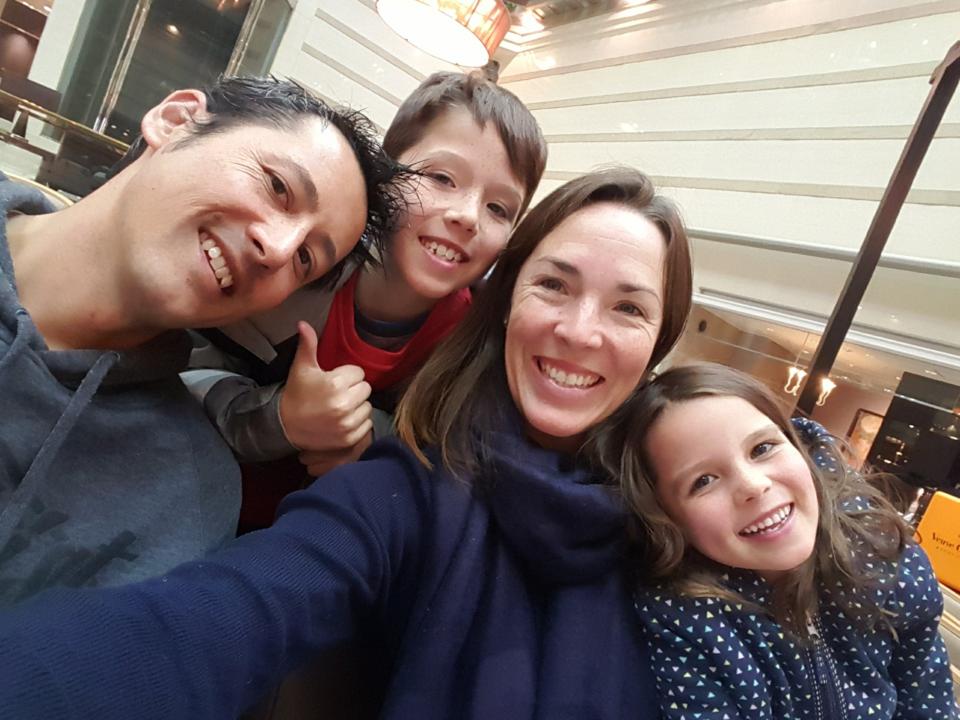[vc_row][vc_column][vc_column_text]
Who doesn’t love a night staring at the stars, particularly with kids. For some of the best astro-views on the planet – you should consider a trip to New Zealand.

New Zealand is home to the only island in the world that has been granted dark sky sanctuary status. Great Barrier Island is one of the best places in the world to view the stars. Head south in New Zealand and you could catch a glimpse of the Aurora Australis.
The night sky is woven into the culture of the New Zealand Maori people. Matariki, the rise of the Pleiades constellation, signals the start of the Maori New Year. So it’s no surprise that New Zealand is filled with great places to view the starts.
Here are some of the best for you to visit with kids.
Great Barrier Island (Aotea)
Great Barrier Island (yes island, not reef) is an International Dark Sky Sanctuary. It’s one of only four places in the world (and the only island) to be granted sanctuary status.

A dark sky sanctuary is defined as public or private land that has “an exceptional or distinguished quality of starry nights”.
Great Barrier Island the largest of the Hauraki Gulf islands north east of Auckland. It’s isolated, has a small resident population and is free from the electricity grid. What this means for travellers is less light pollution and more protected stargazing. At night the Milky Way spans the sky and the Magellanic Clouds, not visible in the Northern Hemisphere, are easily seen.
Nearly 60 per cent of Great Barrier Island is under the management of the New Zealand Department of Conservation. For the roughly 1000 residents, a dark night sky has become a way of life and you’ll find yourself slowing down and appreciating life on any visit here.
But star gazing isn’t the only thing you can do. Aotea is also a boating paradise, a popular destination for diving, fishing, surfing, mountain bike riding and hiking. So there’s plenty to keep this kids occupied in the daytime too.
Aoraki Mackenzie
Another top spot to search for spotting stars is Aoraki Mackenzie, in the middle of the South Island.
Aoraki Mackenzie is a designated International Dark Sky Reserve. The difference between names is that a sanctuary is usually in a remote place with little threat to its night skies. It includes Aoraki Mt Cook National Park, and the villages of Lake Tekapo, Twizel and Mt Cook.

Aoraki Mackenzie isn’t remote – but it is still a prime place to admire the constellations. It is the largest dark sky reserve in the world.
Spend one night doing a classic guided tour to the observatory to learn about the stars. And then the next just soaking up the view while relaxing in the hot pools at Tekapo Springs.
Lake Tekapo
Lake Tekapo is home to New Zealand’s premier scientific astronomy observatory, Mt John Observatory. The observatory site was chosen in 1963 for the clarity and darkness of the night sky after three years of site testing.

About three hours drive south-west of Christchurch in the Mackenzie Basin, Earth and Sky Tours at Mt John Observatory offers a range of astro-tours. On a clear night several telescopes are set up outside. If you bring your DSLR camera, the observatory’s astro-photographers may capture the night sky for you.
If the sky is cloudy, don’t worry. Mount John also offers a fascinating behind the scenes tour of what life is like for an astronomer. It offers the chance to see the research equipment that is usually off limits to the general public and to learn about the research conducted at Mt John.
In the day time, the views at Lake Tekapo are just as stunning. The remarkable turquoise colour lake is framed by snow-capped mountains. Lake Tekapo gets its intense milky-turquoise colour from the fine rock-flour (ground by glaciers) which is suspended in the water.

Stewart Island
Head south if you want to see the Southern Lights, also known as Aurora Australis. The aurora occurs when electrically charged solar particles collide with gases such as oxygen and nitrogen in the Earth’s atmosphere, causing those gases to emit light. The most common colour is a yellow-green, but the aurora can also be pink or purple.
Despite the name, you don’t have to be in Australia to see them. The auroras happen in ovals around the earth’s two magnetic poles. The further south you go, the more likely you are to see the Aurora Australis.
The furthest south you can go in New Zealand is Stewart Island. Up to 80 per cent of the island is made up of the Rakiura National Park – meaning there’s little light polution and a great chance for star-gazing.

Auroras can happen at any time, but they are more common in the winter months.
The website Aurora Service offers hourly aurora forecasts, using real time solar wind data from Nasa’s Ace Spacecraft. The aurora strength is measured in Kp. Kp ranges between zero and nine. Zero is the weakest and nine is the strongest. Anything Kp5 or above is considered a geomagnetic storm and a good chance of an aurora occurring.
Dunedin in New Zealand is one of the best larger cities to catch the colourful night-time display. Queenstown has also been known to have incredible southern lights displays. And Lake Tekapo (see above) is also known for spectacular displays.
[/vc_column_text][/vc_column][/vc_row]

